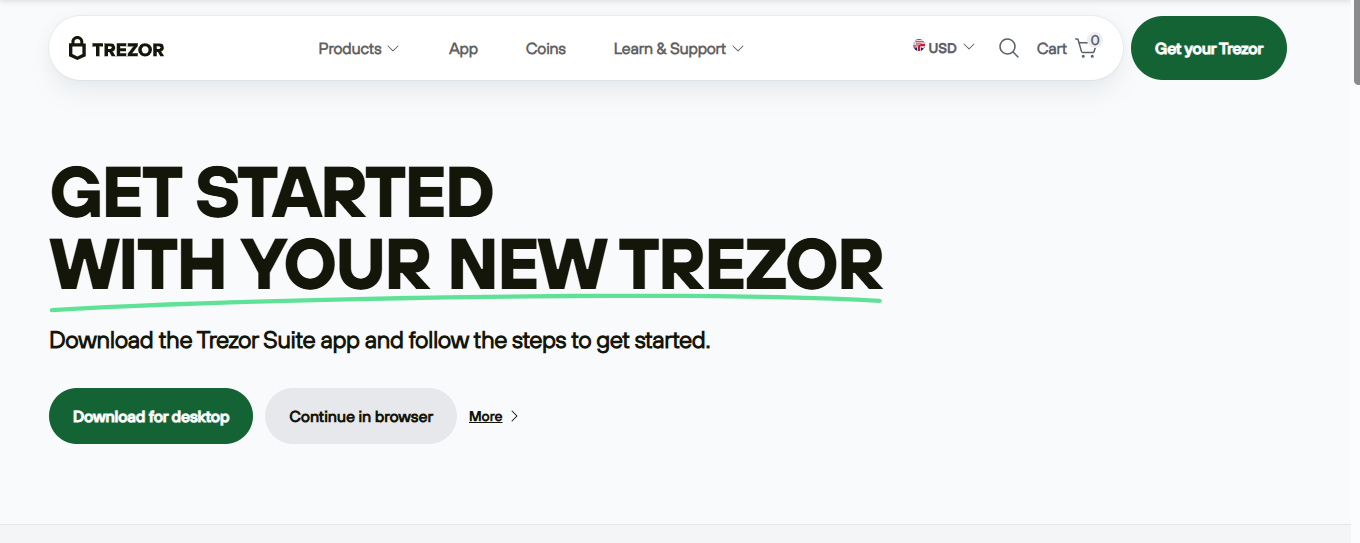
This article explains what Trezor Bridge is (and how its role has changed), how to obtain the official software or recommended alternatives, and practical steps for installing, troubleshooting and staying safe while using browser-based wallets with your Trezor hardware device.
Trezor Bridge was a small, local helper program that acted as a translator between modern web browsers and a Trezor hardware wallet. Because most browsers restrict direct, low-level USB access for security reasons, Bridge provided a secure, local channel so web wallets and the official Trezor web interfaces could communicate with the device while keeping private keys safely on the hardware.
Recent changes in the Trezor ecosystem have deprecated the standalone Trezor Bridge application. In practice this means the vendor recommends moving to the official Trezor Suite desktop app or using supported integration methods rather than relying on a separate Bridge installation. If you already have a standalone Bridge installed, consult the official guidance before keeping or reinstalling it, because future releases and integrations are moving away from that model.
Always download Trezor-related software from the official domain. Two primary official resources you should use are the Trezor Suite download page and the official onboarding/start page. The Trezor Suite bundles device connectivity, management and updates inside a single, signed desktop app that removes the need for a separate Bridge helper on most systems. If you need browser integrations or third-party wallet support, check the recommended integrations and developer guides linked from the official site.
Short checklist: visit the official pages, prefer Trezor Suite for desktop use, and follow the vendor instructions rather than third-party mirrors or random downloads.
Installation steps differ by platform but follow the usual secure-app pattern: download the signed installer from the official page, verify the file if verification instructions are provided, run the installer and follow the on-screen prompts. After installation, connect your Trezor using the supplied cable and open the Trezor Suite desktop app or the vendor-approved browser workflow to complete pairing and setup. The device screen will request confirmations for any sensitive actions — always accept transactions only after verifying them on the device itself.
If your browser or desktop app doesn’t detect the Trezor device, try these non-invasive checks in sequence:
If problems persist, consult the official guides and support channels for platform-specific instructions. When asking for help, never share your seed phrase or private keys — describe only the environment and symptoms (OS, browser, app version, error messages).
Using a hardware wallet like Trezor provides strong protections, but correct workflows matter. Follow these practical rules:
If the official guidance for your device and platform indicates that standalone Bridge is deprecated, uninstalling it can prevent conflicts with the Trezor Suite or updated connectivity layers. Follow the vendor’s uninstall instructions for your OS — these are typically included on the same help pages that explain the deprecation and the migration steps.
Third-party wallet developers commonly use the official integration libraries to communicate with Trezor devices securely. If you’re using a third-party browser wallet, prefer ones that reference the official integration methods and documentation rather than ad-hoc USB approaches. Developers should consult the vendor’s integration guides for up-to-date APIs and recommended workflows.
For most users today the recommended path is to use the official Trezor Suite desktop app for device management and trusted integrations for browser workflows. Only rely on a standalone Bridge if you have a very specific legacy need and you’ve verified that it’s still supported for your environment. Whatever path you choose, make sure the software comes from the official pages and always confirm sensitive operations on the hardware device itself.